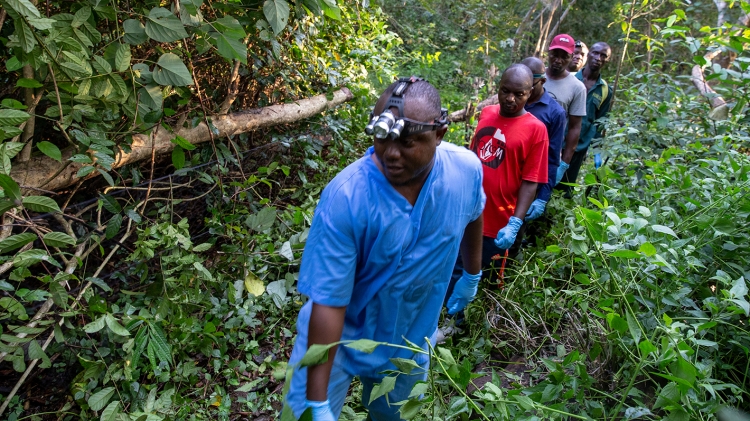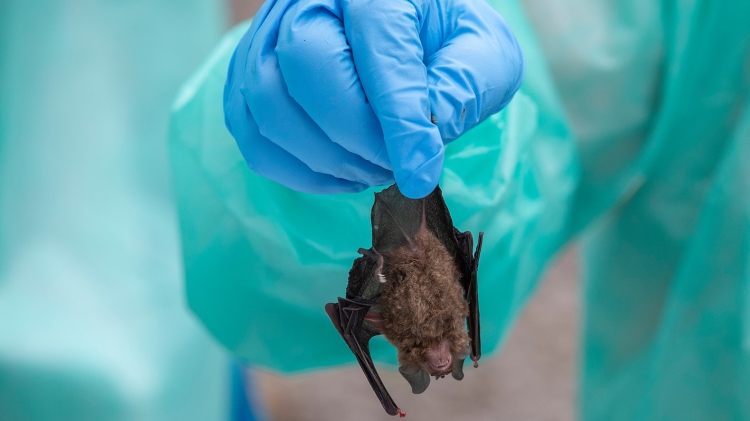Njala, Sierra Leone — It sleeps upside down, comes to life at night and can carry Ebola. What is it? A bat. After suffering from a devastating Ebola outbreak in 2014, veterinary scientists in Sierra Leone are training their peers from around Africa to catch, sample and diagnose — using nuclear-derived techniques — potentially virus-transmitting bats.
“We’ve gone through the epidemic, unfortunately,” said Dickson Kargbo, a local veterinary scientist, shoving branches aside as he walked into the depths of the jungle at dusk, net in hand, head lamp shining, blue scrubs on and a queue of vets behind him. “But on the bright side, we now have the technology, the experience and much to share.”
Veterinary scientists and wildlife specialists participating in the training came from seven African countries: Burkina Faso, Burundi, Cameroon, the Central African Republic, Ghana, Liberia, Nigeria and Togo. Their objective? Disease surveillance. With the support of the IAEA and the Food and Agriculture Organization of the United Nations (FAO), they learned to understand bats’ behaviour to trap and sample them following the right biosafety measures.
“The idea is for them to get hands-on experience and the right scientific knowledge to be able to capture free-roaming bats and probe them without killing them, so they can return to the wild,” said Hermann Unger, technical officer at the Joint FAO/IAEA Division of Nuclear Applications in Food and Agriculture. “Throughout the process, you have to protect both yourself and the animal.”
During the two-week training course, vets, forest rangers and wildlife specialists trapped more than 30 bats for laboratory analysis in the jungles of Njala, central Sierra Leone.










